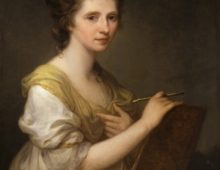Tagged with Elizabeth Fry
Resource : The Rajah Quilt
Transportation was an extremely harsh punishment of the 1700s and 1800s, second only to execution. Between 1787 and 1852 as many as 25,000 women were transported from Britain to Australia to work in penal colonies, for crimes as varied as petty theft and poaching, to murder. Their sentences were often miscarriages of justice. Many didn’t survive the long journey. Most of them never returned. This remarkable quilt was made by women transported to Tasmania in 1841.
Resource : Newgate prison door
Newgate Prison was located on Newgate Street in the City of London, on the site where the famous court, The Old Bailey, now stands. The prison was notorious for its appalling, overcrowded, cruel and unsanitary conditions. It housed a range of prisoners, including men, women and children, from those convicted of minor offenders to those awaiting execution. It would be outside Newgate’s gates that the last British prisoners to suffer beheading took place, when five revolutionary ringleaders accused of a conspiracy to assassinate the Cabinet were executed on 1 May 1820.
Resource : Portrait of Elizabeth Fry
Elizabeth Gurney Fry (1780 – 1845) was a social reformer, best remembered for her work improving conditions for people in prison. She was the first female prison reformer in Europe, and probably the best known of her time. She became known as ‘the angel of the prisons.’


